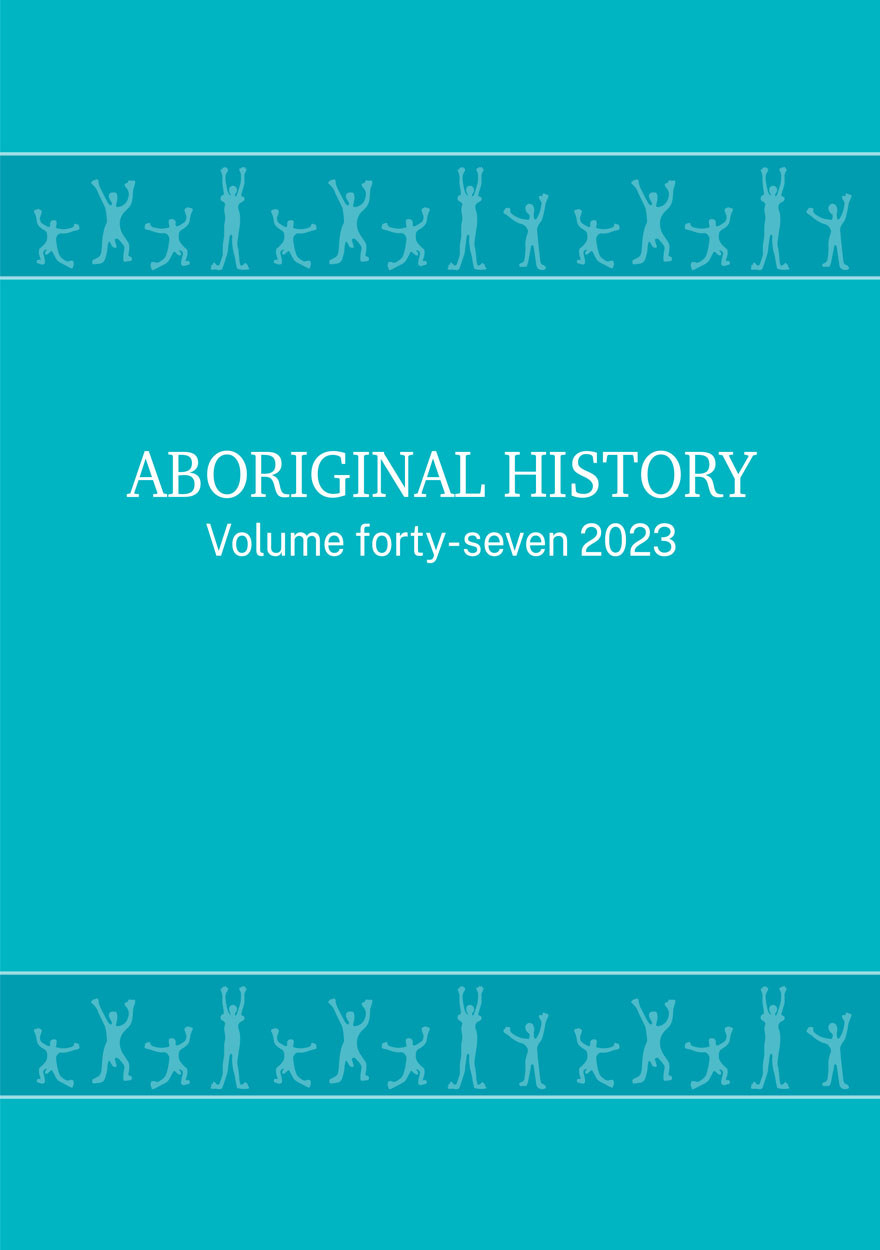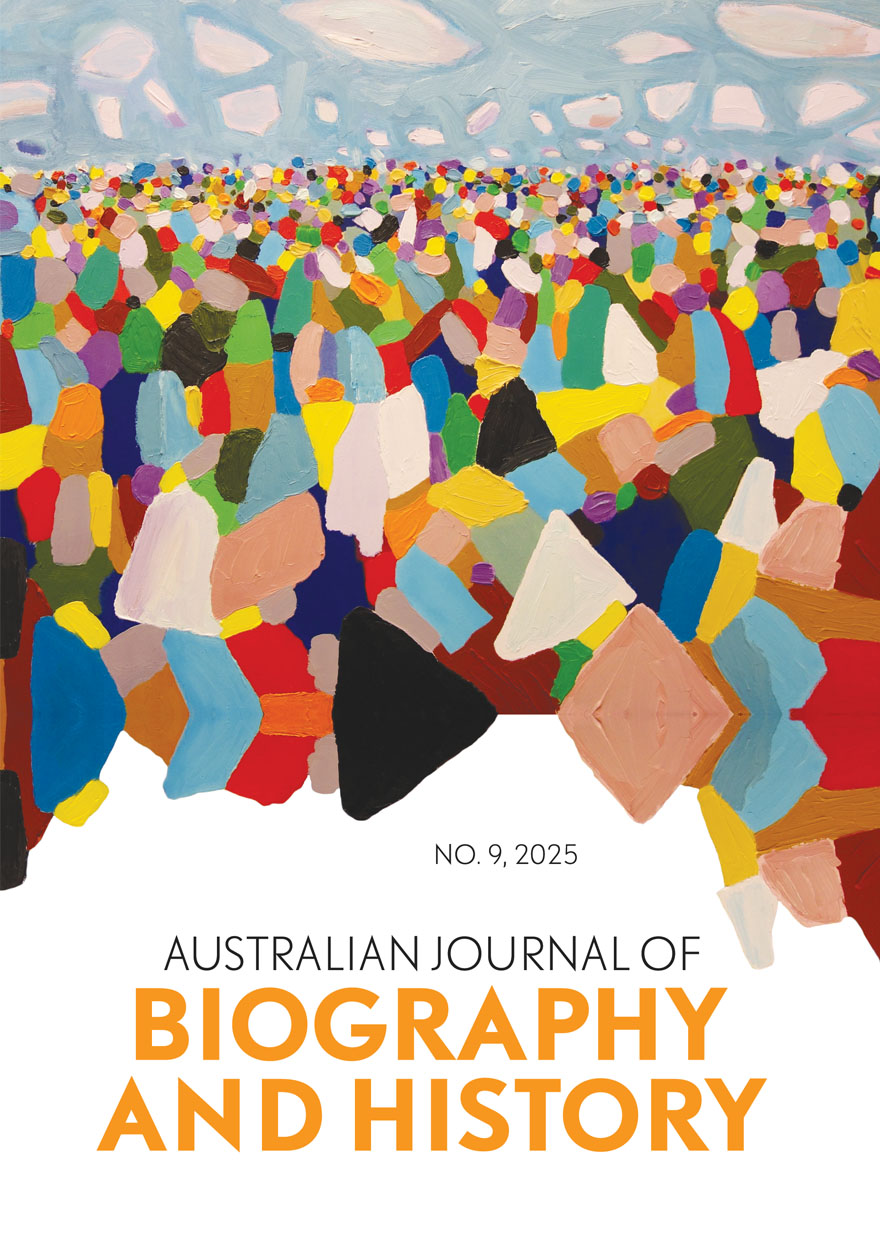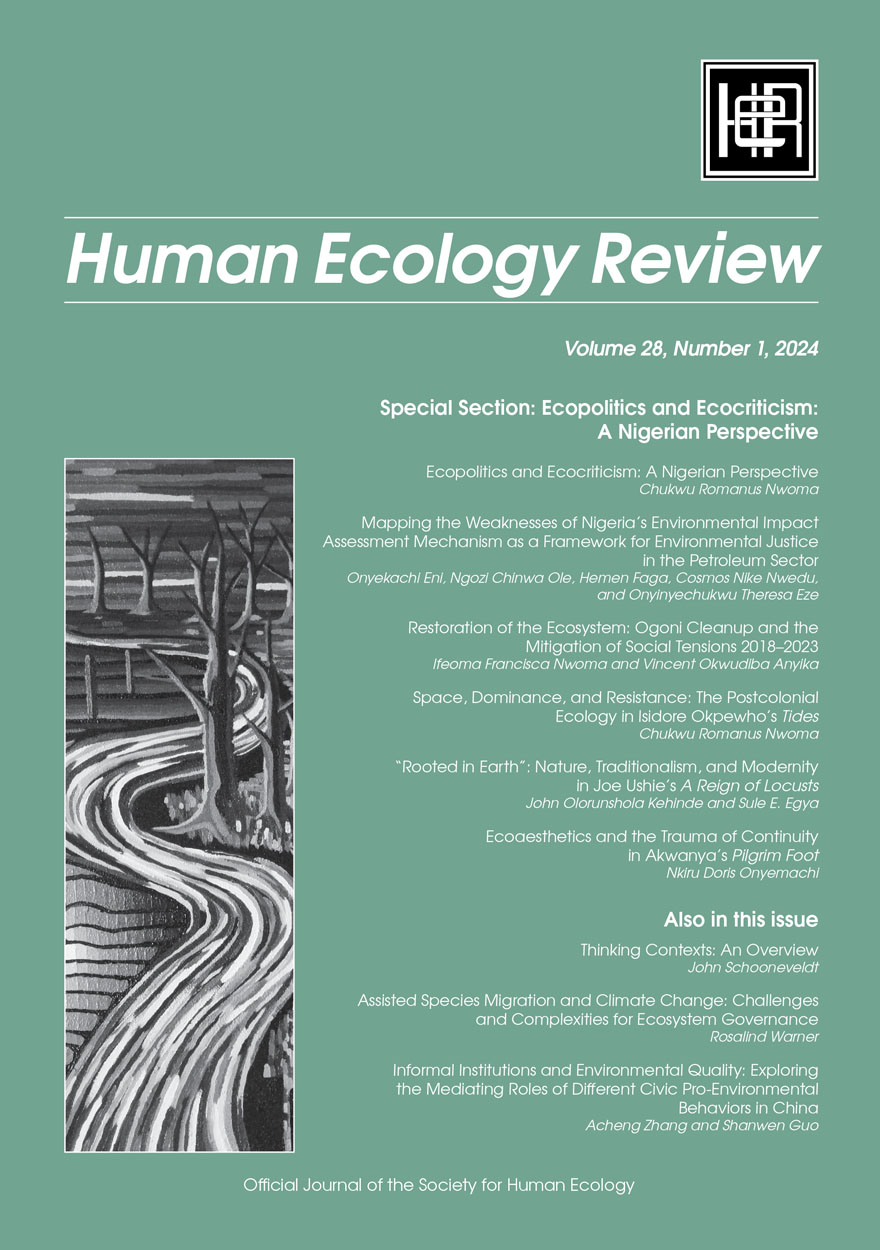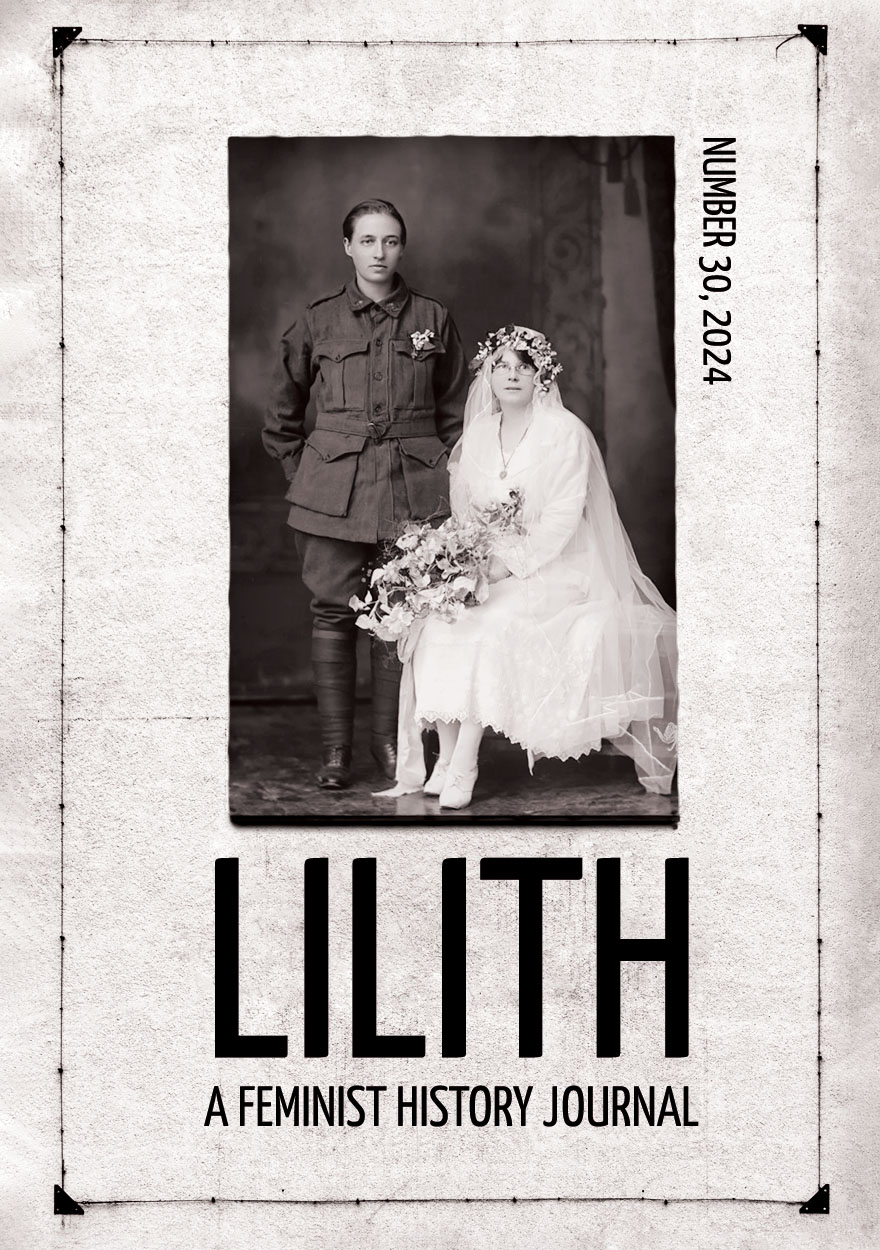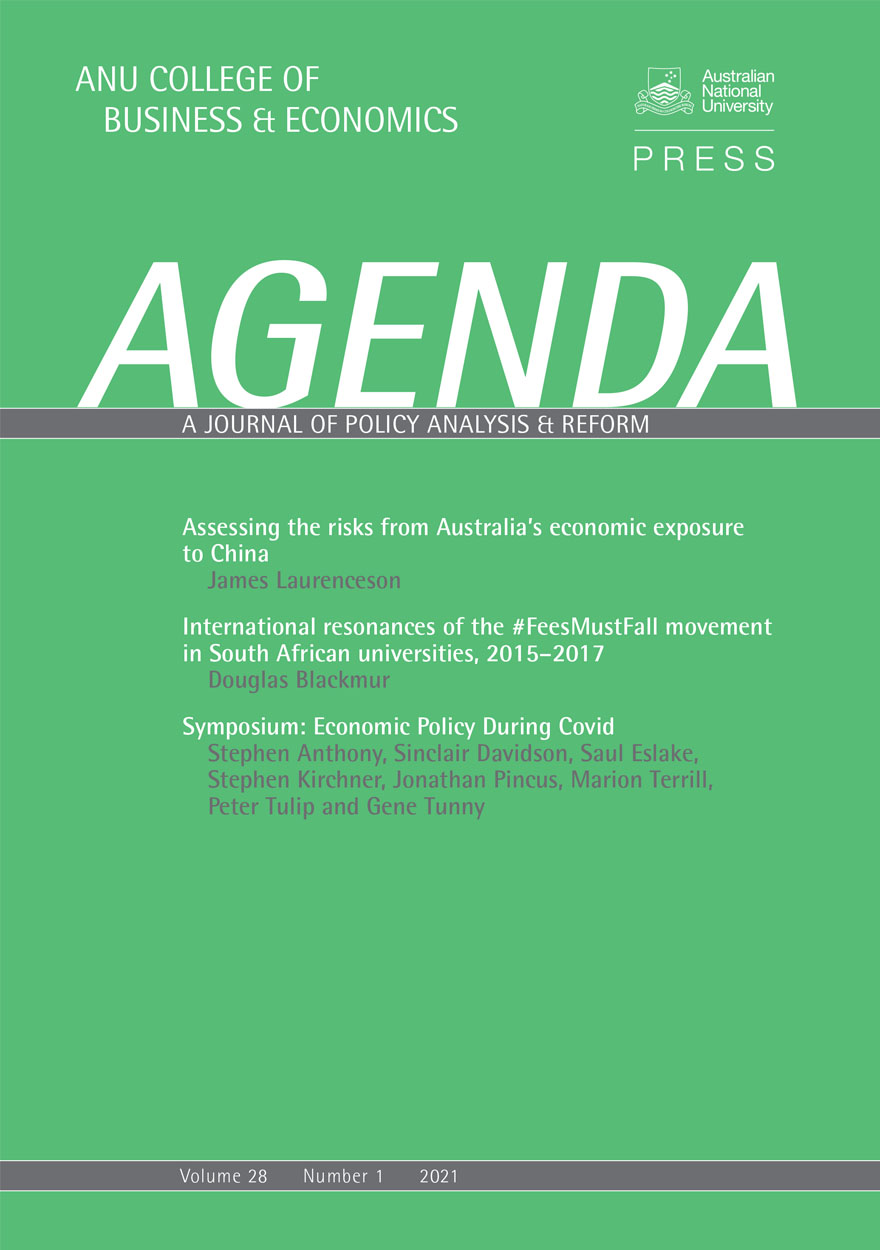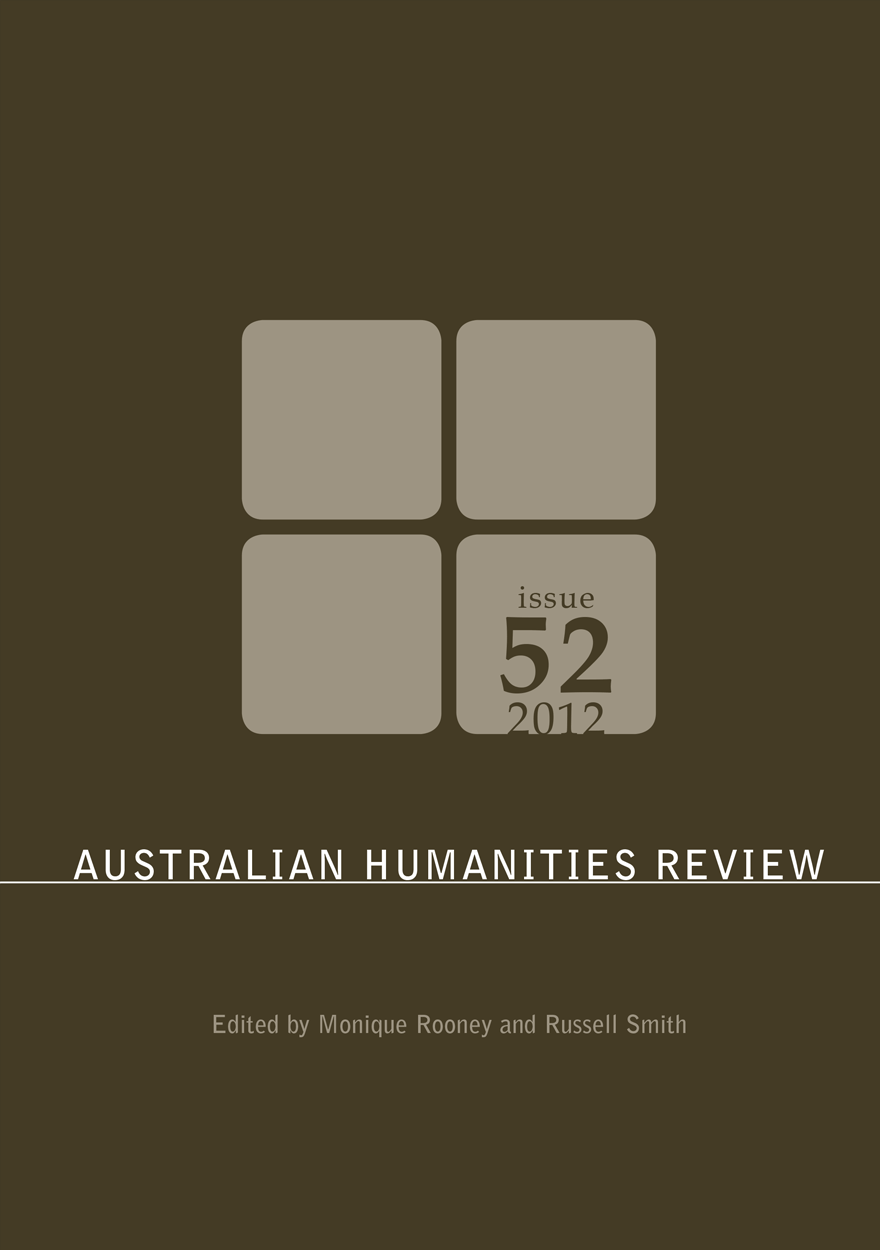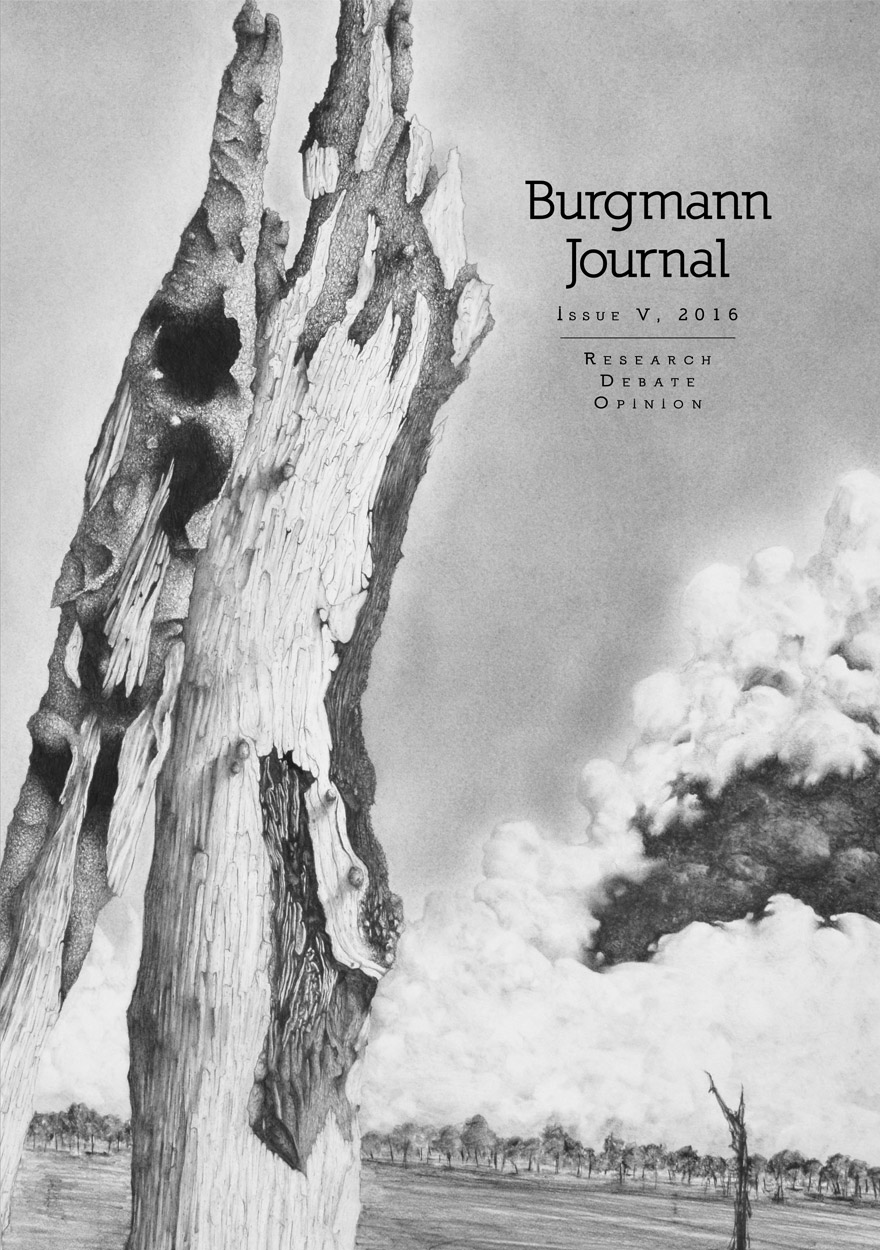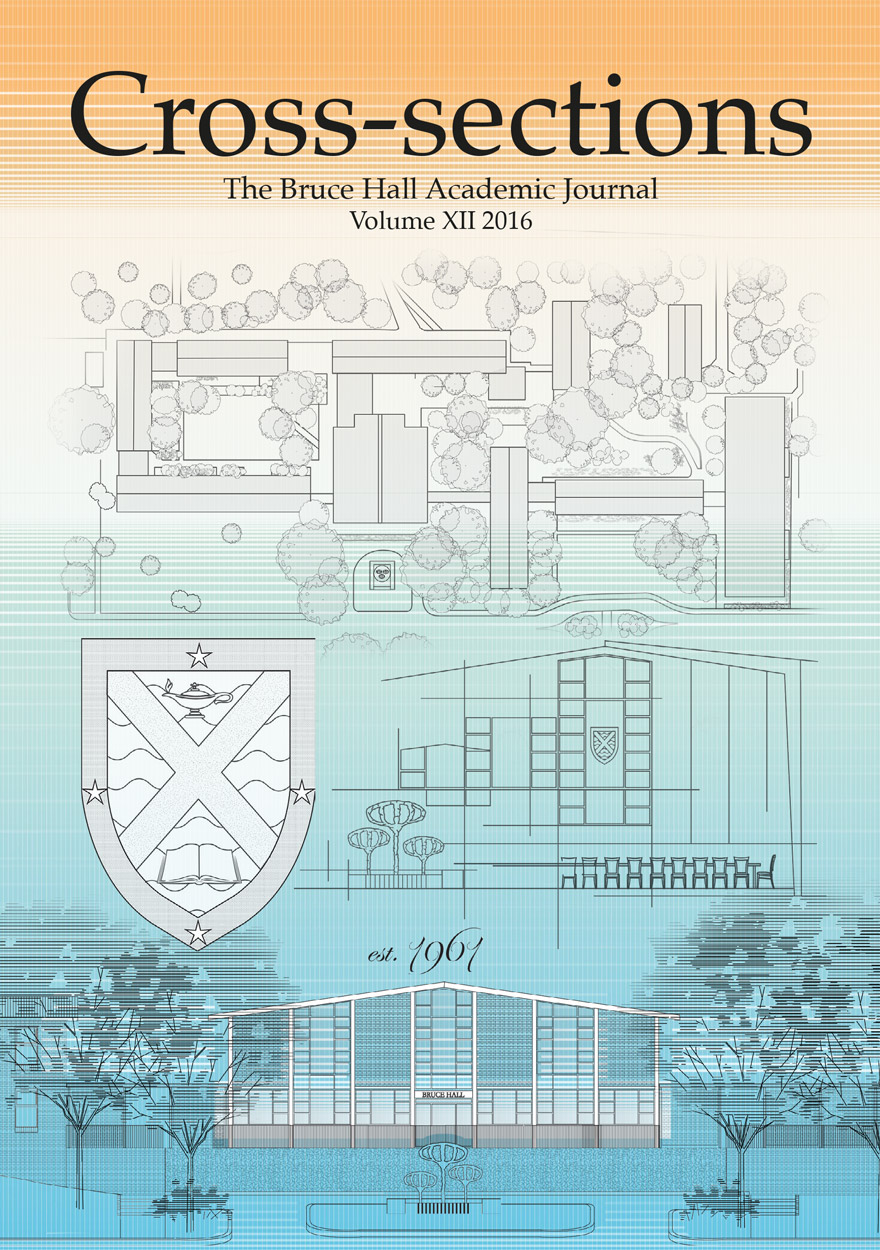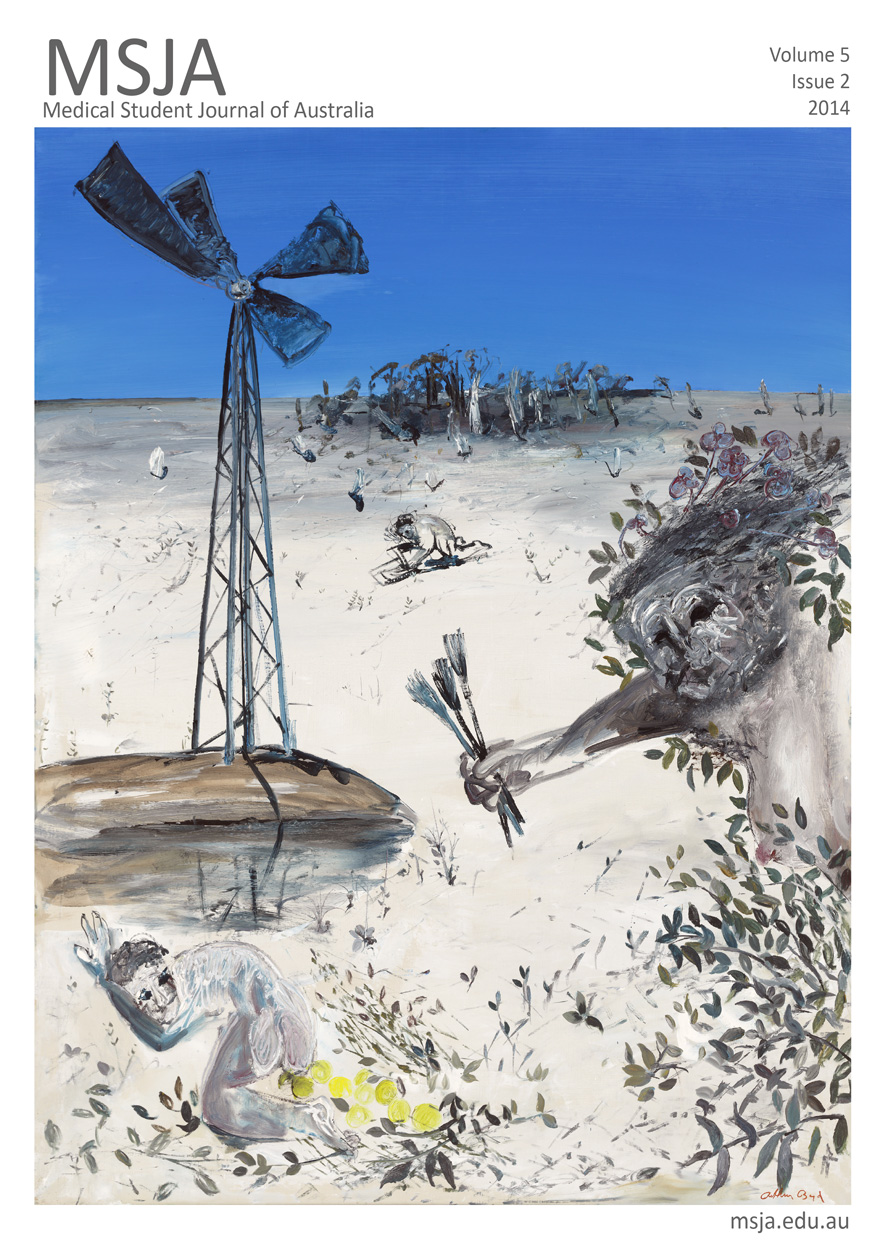Journals
Browse or search a variety of academic journals maintained by ANU Press, or find out more about the journal authors. Download the book for free or buy a print-on-demand copy.

Aboriginal History Journal: Volume 43 »
Edited by: Ingereth Macfarlane
Publication date: December 2020
Volume 43 opens with an unexpectedly timely essay. Tom Gara’s study of the influenza epidemic that reached Australia in 1919 expands consideration of its global effects to include the poorly documented impacts on Aboriginal people in South Australia. The study was written and finalised to mark the centenary, prior to the advent of the 2020 Coronavirus pandemic. In this dramatically altered context, Gara’s evidence becomes significantly comparative as well as an account of an under-researched aspect of past infectious disease spread.
Annemarie McLaren’s article poses questions about the differing assumptions Aboriginal men and colonists made about their earliest travels together in country around Sydney Cove in 1791. McLaren interrogates Watkin Tench’s and John Hunter’s accounts of their joint travels with Colebee and Balloderry to explore how ‘guiding’ relationships first developed between Aboriginal people and expeditionary parties in New South Wales.
Grace Karskens’ conversation with Mark McKenna about her engagement with the story of Nah Doong, a nineteenth-century Aboriginal woman living in colonial Penrith, NSW, offers ‘a masterclass in how to write history’. Careful reading against the grain brings Nah Doong’s experience alive in a rare, fleshed-out biographical picture of an individual woman.
‘Big John Dodo’ (c. 1910–2003) is respected as a ceremonial and cultural leader for Karajarri country, south of Broome, WA. Darren Jorgensen draws on family and personal interviews to re-position John Dodo Nangkiriny’s ‘transitional’ art forms, which do not emulate pre-colonial or contemporary forms and are produced with new materials.
Beth Marsden provides a close reading of the campaign to resist construction of a ‘transit village’ in Morwell, Victoria, in the 1960s, illuminating various strands of assimilationist policy as well as multilayered political and grassroots resistance.
Tim Rowse and Barry Leithhead re-examine the underlying assumptions held by Dr Cecil Cook in his career as a Northern Territory administrator and commentator (1925–69). Demonstrating the relationship between racial thought and liberalism in Cook’s policies and advocacy, they argue that Cook’s common function as a shorthand for ‘ideologies, policies and practices of government that seem at best misguided and at worst cruel and racist’ needs re-evaluation.
In addition to a wide range of book reviews, this volume also has a review of the important Songlines: Tracking the Seven Sisters exhibition.
Download for free
Not available for purchase

Meaning, Life and Culture »
In conversation with Anna Wierzbicka
Edited by: Helen Bromhead, Zhengdao Ye
Publication date: December 2020
This book is dedicated to Anna Wierzbicka, one of the most influential and innovative linguists of her generation. Her work spans a number of disciplines, including anthropology, cultural psychology, cognitive science, philosophy and religious studies, as well as her home base of linguistics. She is best known for the Natural Semantic Metalanguage (NSM) approach to meaning—a versatile tool for exploring ‘big questions’ concerning the diversity and universals of people’s experience in the world.
In this volume, Anna Wierzbicka’s former students, old and current colleagues, ‘kindred spirits’ and ‘sparring partners’ engage with her ideas and diverse body of work. These authors cover topics from the grammar of action verbs to cross-cultural pragmatics, and over 30 languages from around the world are represented.
The chapters in Part 1 focus on the NSM approach and cover four themes: lexico-grammatical semantics, cultural keywords, semantics of nouns, and emotion. In Part 2, the contributors connect with a meaning-based approach from their own intellectual perspectives, including syntax, anthropology, cognitive linguistics and sociolinguistics.
The deep humanistic perspective, wide-ranging themes and interdisciplinary nature of Wierzbicka’s research are reflected in the contributions. The common thread running through all chapters is the primacy of meaning to the understanding of language and culture.

Niche Wars »
Australia in Afghanistan and Iraq, 2001–2014
Publication date: 2020
Australia invoked the ANZUS Alliance following the Al Qaeda attacks in the United States on 11 September 2001. But unlike the calls to arms at the onset of the world wars, Australia decided to make only carefully calibrated force contributions in support of the US-led coalition campaigns in Afghanistan and Iraq. Why is this so?
Niche Wars examines Australia’s experience on military operations in Afghanistan and Iraq from 2001 to 2014. These operations saw over 40 Australian soldiers killed and hundreds wounded. But the toll since has been greater. For Afghanistan and Iraq the costs are hard to measure. Why were these forces deployed? What role did Australia play in shaping the strategy and determining the outcome? How effective were they? Why is so little known about Australia’s involvement in these campaigns? What lessons can be learned from this experience?
Niche Wars commences with a scene-setting overview of Australia’s military involvement in the Middle East over more than a century. It then draws on unique insights from many angles, across a spectrum of men and women, ranging from key Australian decision makers, practitioners and observers. The book includes a wide range of perspectives in chapters written by federal government ministers, departmental secretaries, service commanders, task force commanders, sailors, soldiers, airmen and women, international aid workers, diplomats, police, journalists, coalition observers and academics.
Niche Wars makes for compelling reading but also stands as a reference work on how and why Australia became entangled in these conflicts that had devastating consequences. If lessons can be learned from history about how Australia uses its military forces, this book is where to find them.

East Asia Forum Quarterly: Volume 12, Number 4, 2020 »
Publication date: December 2020
COVID-19 has spotlighted, like no other event, the importance of the ascendance of China in global affairs. This issue of East Asia Forum Quarterly examines how China is changing and why that is important. Contributors offer perspectives on China's economic transformation and the evolution of the political, military, technological, environmental and strategic dimensions of China under President Xi Jinping. The Asian Review discusses the future of Kashmir, human rights in Southeast Asia and global governance reform.
Download for free
Not available for purchase

Interpreting Myanmar »
A Decade of Analysis
Authored by: Andrew Selth
Publication date: December 2020
Since the abortive 1988 pro-democracy uprising, Myanmar (formerly Burma) has attracted increased attention from a wide range of observers. Yet, despite all the statements, publications and documentary films made about the country over the past 32 years, it is still little known and poorly understood. It remains the subject of many myths, mysteries and misconceptions. Between 2008 and 2019, Andrew Selth clarified and explained contemporary developments in Myanmar on the Lowy Institute’s internationally acclaimed blog, The Interpreter. This collection of his 97 articles provides a fascinating and informative record of that critical period, and helps to explain many issues that remain relevant today.

On Taungurung Land »
Sharing History and Culture
Authored by: Roy Henry Patterson, Jennifer Jones
Publication date: December 2020
On Taungurung Land: Sharing History and Culture is the first monograph to examine how the Taungurung Nation of central Victoria negotiated with protectors and pastoralists to retain possession of their own country for as long as possible. Historic accounts, to date, have treated the histories of Acheron and Mohican Aboriginal stations as preliminary to the establishment of the more famous Coranderrk on Wurundjeri land. Instead of ‘rushing down the hill’ to Coranderrk, this book concentrates upon the two foundational Aboriginal stations on Taungurung Country. A collaboration between Elder Uncle Roy Patterson and Jennifer Jones, the book draws upon Taungurung oral knowledge and an unusually rich historical record. This fine-grained local history and cultural memoir shows that adaptation to white settlement and the preservation of culture were not mutually exclusive. Uncle Roy shares generational knowledge in this book in order to revitalise relationships to place and establish respect and mutual practices of care for Country.

Australian Journal of Biography and History: No. 4, 2020 »
Publication date: December 2020
This issue of the Australian Journal of Biography and History includes eight peer-reviewed articles, and 12 book reviews. Each of the articles uses biography to illustrate historical themes and to add texture to historical episodes. Patricia Clarke examines the role of four women journalists who were recruited by the Australian Government to tour operational bases in eastern Australia during a critical phase in the Pacific War. In the field of journalism, women faced systemic barriers to employment; the women described in Clarke’s article went to great efforts to attain equality in the workplace, yet they were often restricted to weekly publications while the dailies remained the province of men. Lyndon and Lyne Megarrity, in their article on the two wives of the Queensland businessman and later premier Robert Philp (1899–1903, 1907–08), use the biographies of Jessie (née Bannister; 1856–90), and Mina (née Munro; 1867–1940) to illustrate the changes in the role of elite Queensland women over the relatively short period of a decade.
The next two articles consider the problems of constructing biographies of those who are essentially invisible in the historical record. Melanie Nolan, Christine Fernon and Rebecca Kippen discuss the ’first-fleeter’ Sarah Bellamy’s seemingly ‘insignificant life’ to illustrate various aspects of the British colonisation of the continent. The biography of the Boonwurrung man Kurrburra (1797–1849) forms the subject of the contribution by Ian Clark, Rolf Schlagloth, Fred Cahir and Gabrielle McGinnis. By setting out to consider the whole of Kurrburra’s life rather than only the moments of contact (or conflict) with colonial society, he can be re-presented as one who was respected and important in his Aboriginal community, and who managed, negotiated and sought to control his interactions with the colonising forces.
Sophie Scott-Brown, in her article on the British Marxist historian Raphael Samuel, considers the utility of biography in relation to intellectual history, and the relationship between what she terms ‘cultural persona’ and the empirical personality. By contrast, Michael Davis’s biographical portrait of the anthropologist Leonhard Adam reveals a figure who some viewed as an outsider, but whose works on Aboriginal art were highly successful. In his study of the Australian delegation to the 1919 Paris Peace Conference, David Lee looks at the men who between them forcefully asserted Australia’s position, and thus contributed to the country’s consolidation as an independent nation-state during the inter-war period. In the final article, Stephen Wilks argues that biography is founded on human agency, and that political history is ‘rich in interpersonal interaction’. He concludes that biography provides scholars with ‘a platform for exploring the tortuous chains of decision, chance and error that characterise the political past and the legacies it imparts’.
Download for free
Not available for purchase

International Review of Environmental History: Volume 6, Issue 2, 2020 »
Edited by: James Beattie
Publication date: November 2020
International Review of Environmental History takes an interdisciplinary and global approach to environmental history. It encourages scholars to think big and to tackle the challenges of writing environmental histories across different methodologies, nations, and time-scales. The journal embraces interdisciplinary, comparative and transnational methods, while still recognising the importance of locality in understanding these global processes.
The journal's goal is to be read across disciplines, not just within history. It publishes on all thematic and geographic topics of environmental history, but especially encourage articles with perspectives focused on or developed from the southern hemisphere and the ‘global south’.
Download for free
Not available for purchase

Towards Human Rights Compliance in Australian Prisons »
Authored by: Anita Mackay
Publication date: November 2020
Imprisoned people have always been vulnerable and in need of human rights protections. The slow but steady growth in the protection of imprisoned people’s rights over recent decades in Australia has mostly come from incremental change to prison legislation and common law principles. A radical influence is about to disrupt this slow change.
Australian prisons and other closed environments will soon be subject to international inspections by the United Nations Subcommittee on the Prevention of Torture (SPT). This is because the Australian Government ratified the Optional Protocol to the Convention Against Torture and other Cruel, Inhuman or Degrading Treatment or Punishment (OPCAT) in December 2017.
Australia’s international human rights law obligations as they apply to prisons are complex and stem from multiple Treaties. This book distils these obligations into five prerequisites for compliance, consistent with the preventive focus of the OPCAT. They are:
reduce reliance on imprisonment
align domestic legislation with Australia’s international human rights law obligations
shift the focus of imprisonment to the goal of rehabilitation and restoration
support prison staff to treat imprisoned people in a human rights–consistent manner
ensure decent physical conditions in all prisons.
Attention to each of these five areas will help all levels of Australian government and prison managers take the steps required to move towards compliance. Human-rights led prison reform is necessary both to improve the lives of imprisoned people and for Australia to achieve compliance with the international human rights legal obligations to which it has voluntarily committed itself.
Awarded the 2021 Australian and New Zealand Society of Criminology (ANZSOC) Christine M Alder book award for ‘an outstanding monograph or book which, in the opinion of the judges, has made a valuable and outstanding contribution to criminology’.
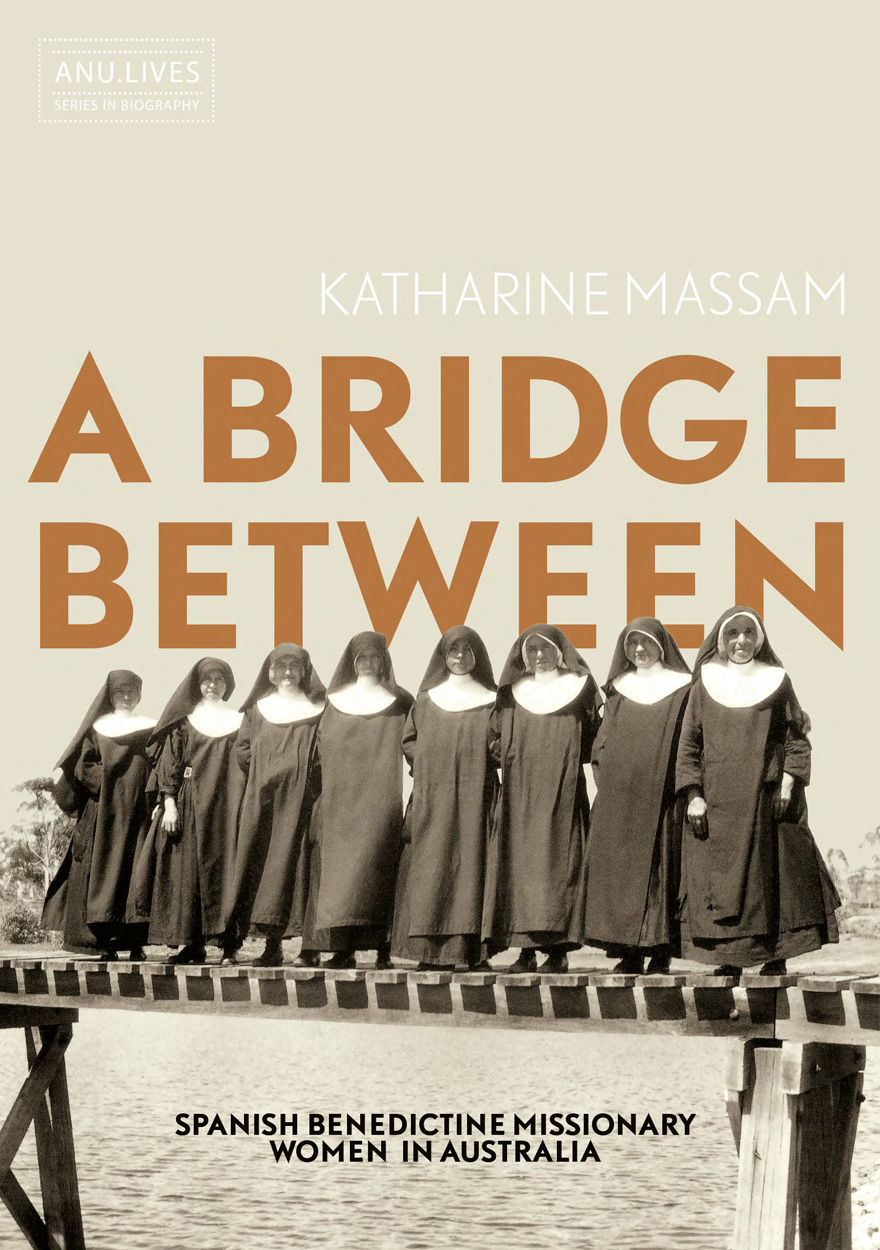
A Bridge Between »
Spanish Benedictine Missionary Women in Australia
Authored by: Katharine Massam
Publication date: October 2020
This sensitive account of Spanish Benedictine women at an Aboriginal mission in Western Australia is poignant and disturbing. Notable for its ecumenical spirit, depth of research and deep engagement with the subject, A Bridge Between is a model of how religious history, in its broader bearings, can be written.
— Graeme Davison, Monash University
With great insight and care, A Bridge Between presents a sympathetic but not uncritical history of the lives of individuals who have often been invisible. The story of the nuns at New Norcia is a timely contribution to Australia’s religious history. Given the findings of the Royal Commission, it will be widely read both within and beyond the academy. History is, here, a spiritual discipline, and an exercise in hope and reconciliation.
— Laura Rademaker, The Australian National University
A Bridge Between is the first account of the Benedictine women who worked at New Norcia and the first book-length exploration of twentieth-century life in the Western Australian mission town. From the founding of a grand school intended for ‘nativas’, through links to Mexico and Paraguay then Ireland, India and Belgium, as well as to their house in the Kimberley, and a network of villages near Burgos in the north of Spain, this is a complex international history. A Bridge Between gathers a powerful, fragmented story from the margins of the archive, recalling the Aboriginal women who joined the community in the 1950s and the compelling reunion of missionaries and former students in 2001. By tracing the all-but-forgotten story of the community of Benedictine women who were central to the experience of the mission for many Aboriginal families in the twentieth century, this book lays a foundation for further work.

Lilith: A Feminist History Journal: Number 26 »
Publication date: October 2020
The 2020 issue of Lilith features research on a range of feminist history topics, including an exploration of the performativity of temperance activist Bessie Harrison Lee; a critique of how colonial women are represented in Australian museums; a discussion of representations of motherhood in digital archives; a reconceptualisation of the radical nature of women’s political history; an investigation of the role that dress played in encouraging community acceptance of early women preachers in Australia; an inquiry into how fat bodies became a site of resistance of gender norms among rural women in interwar Western Australia; a study of women’s presence on plantations in colonial north Queensland; a survey of ‘moral treatment’ of puerperal insanity among female patients at Fremantle Lunatic Asylum; and an analysis of the coercion of women into domestic service in interwar Britain.
Download for free
Not available for purchase

Made in China Journal: Volume 5, Issue 2, 2020 »
Edited by: Ivan Franceschini, Nicholas Loubere
Publication date: October 2020
The most Gothic description of Capital is also the most accurate. Capital is an abstract parasite, an insatiable vampire and zombie-maker; but the living flesh it converts into dead labor is ours, and the zombies it makes are us. There is a sense in which it simply is the case that the political elite are our servants; the miserable service they provide for us is to launder our libidos, to obligingly re-present for us our disavowed desires as if they had nothing to do with us.
– Mark Fisher, Capitalist Realism (2009)
Ghostly analogies drawn from the gothic imaginary are common in the Marxist canon, with the most famous case in point being the incipit of Marx and Engels’s Manifesto of the Communist Party, where readers are told that ‘the spectre of communism’ is haunting Europe. Far from being considered curious aberrations, these preternatural metaphors have given rise to a whole literature on spectral capitalism that spans to our present stage of late capitalism. In the 1980s, Aihwa Ong made waves with her study of spirit possessions on the shop floors of modern factories in Malaysia, in which she argued that these spectres represented a form of resistance by workers otherwise powerless in the face of capital. In another instance from the 1990s, Jean and John Comaroff introduced the idea of ‘occult economies’ to make sense of the wave of episodes in which real or imagined magical means were deployed in pursuit of material gains that occurred in South Africa after the end of apartheid. While both conceptualisations received a fair share of criticism—not least for presenting the ghosts of capitalism as dreams and the anthropologist as the psychoanalyst instead of dealing with the proper social and historical context of these phenomena—this issue of the Made in China Journal cuts the Gordian knot by focusing on how individuals in China and other contexts in Asia live and interact with the supernatural. In some cases, ghosts, fortune-tellers, shamans, sorcerers, zombies, corpse brides and aliens merely assist people to get by and cope with the difficulties they face in their daily lives; in others, these beings play subversive roles, undermining the rules that underpin contemporary society. In both cases, they challenge the status quo, hence the title ‘spectral revolutions’.
Download for free
Not available for purchase

ANU Historical Journal II: Number 2 »
Publication date: October 2020
The second issue of the ANU Historical Journal II showcases the research of authors ranging from undergraduate students through to professors, synthesising multiple generations of historical scholarship in the one volume. This issue of the ANUHJ II contributes to a plethora of subjects, with articles considering Australian journalists in China at the turn of the twentieth century; the moral messages of seventeenth-century Dutch Realist art; the characterisation of the ‘modern’ for 1920s women in Home magazine; how we research and teach Western Australian gay history; the production of Robert J. Hawke’s legacy; how Indonesia’s Borobudur temple reflects the country’s nationalism; the ‘housewife syndrome’ in mid-twentieth century America; Anzac and the formation of Australians’ sense of the past; and John Howard’s Indigenous policy portfolio. Further to this, contributors review some recently published books, while leading historians reflect on the past in lecture and essay form.
Download for free
Not available for purchase

‘Now is the Psychological Moment’ »
Earle Page and the Imagining of Australia
Authored by: Stephen Wilks
Publication date: October 2020
Earle Christmas Grafton Page (1880–1961) – surgeon, Country Party leader, treasurer and prime minister – was perhaps the most extraordinary visionary to hold high public office in twentieth-century Australia. Over decades, he made determined efforts to seize ‘the psychological moment’, and thereby realise his vision of a decentralised, regionalised and rationally ordered nation.
Page’s unique dreaming of a very different Australia encompassed new states, hydroelectricity, economic planning, cooperative federalism and rural universities. His story casts light on the wider place in history of visions of national development. He was Australia’s most important advocate of developmentalism, the important yet little-studied stream of thought that assumes that governments can lead the nation to realise its economic potential.
His audacious synthesis of ideas delineated and stretched the Australian political imagination. Page’s rich career confirms that Australia has long inspired popular ideals of national development, but also suggests that their practical implementation was increasingly challenged during the twentieth century.
Effervescent, intelligent and somewhat eccentric, Page was one of Australia’s great optimists. Few Australian leaders who stood for so much have since been so neglected.

The Bible in Buffalo Country »
Oenpelli Mission 1925–1931
Publication date: October 2020
Arriving in the remote Arnhem Land Aboriginal settlement of Oenpelli (Gunbalanya) in 1925, Alf and Mary Dyer aimed to bring Christ to a former buffalo shooting camp and an Aboriginal population many whites considered difficult to control. The Bible in Buffalo Country: Oenpelli Mission 1925–1931 represents a snapshot of the tumultuous first six years of the Church Missionary Society’s mission at Oenpelli and the superintendency of Alfred Dyer between 1925 and 1931. Drawing together documentary and photographic sources with local community memory, a story emerges of miscommunication, sickness, constant logistical issues, and an Aboriginal community choosing when and how to engage with the newcomers to their land.
This book provides a fascinating and detailed record of the primary sources of the mission, placed alongside the interpretation and insight of local Traditional Owners. Its contents include the historical and archaeological context of the primary source material, the vivid mission reports and correspondence, along with stunning photographs of the mission and relevant maps, and finally the oral history of Esther Manakgu, presenting Aboriginal memory of this complex era.
The Bible in Buffalo Country emerged from community desire for access to the source documents of their own history and for their story to be known by the broader Australian public. It is intended for the benefit of communities in western Arnhem Land and is also a rich resource for historians of Aboriginal history (and other scholars in relevant disciplines).

Collaboration for Impact »
Lessons from the Field
Authored by: John Butcher, David Gilchrist
Publication date: September 2020
Collaboration is often seen as a palliative for the many wicked problems challenging our communities. These problems affect some of the most vulnerable and unempowered people in our community. They also carry significant implications for policy processes, programs of service and, ultimately, the budgets and resourcing of national and sub-national governments.
The road to collaboration is paved with good intentions. But, as John Butcher and David Gilchrist reveal, ‘good intentions’ are not enough to ensure well-designed, effective and sustainable collaborative action. Contemporary policy-makers and policy practitioners agree that ‘wicked’ problems in public policy require collaborative approaches, especially when those problems straddle sectoral, institutional, organisational and jurisdictional boundaries.
The authors set out to uncover the core ingredients of good collaboration practice by talking directly to the very people that are engaged in collaborative action. This book applies the insights drawn from conversations with those engaged in collaborations for social purpose—including chief executives, senior managers and frontline workers—to the collaboration challenge. Backed up by an extensive review of the collaboration literature, Butcher and Gilchrist translate their observations into concrete guidance for collaborative practice. The unique value in this book is the authors’ combination of scholarly work with practical suggestions for current and prospective collaborators.

Gouvernance et gestion des aires protégées »
Publication date: September 2020
Le livre “Gouvernance et gestion des aires protégées” est une compilation de textes originaux, d'études de cas et d'exemples du monde entier. Il s’appuie sur une vaste littérature et sur les connaissances et l'expérience de nombreux acteurs des aires protégées. Ces derniers y présentent les connaissances actuelles et les idées innovantes des diverses branches de la gouvernance et de la gestion des aires protégées. Ce livre constitue un investissement dans les compétences et les connaissances des hommes et, par conséquent, dans la gouvernance et la gestion des aires protégées dont ces hommes sont responsables.
Le succès mondial du concept d'aire protégée réside dans la dualité de sa vision : protéger, sur le long terme, à la fois le patrimoine naturel et le patrimoine. Les organisations telles que l'Union internationale pour la conservation de la nature sont une force unificatrice à cet égard. Cependant, les aires protégées restent un phénomène sociopolitique et la façon dont elles sont comprises, gérées et gouvernée par les États peut toujours être le sujet de débats et de contestations. Ainsi, ce livre cherche à éclairer, éduquer et surtout à inciter les lecteurs à réfléchir à l’avenir, au passé et au présent des aires protégées.
Cent soixante neuf auteurs ont participé à la rédaction de ce livre qui porte sur tous les aspects de la gouvernance et de la gestion des aires protégées. Ils ont ainsi créé un outil de formation et de renforcement des capacités pour les agents de terrain et les gestionnaires des aires protégées ainsi que les décideurs de plus haut niveau.
La traduction de l'ouvrage est en cours et les chapitres traduits seront publiés progressivement, nous vous invitons donc à consulter le site régulièrement.

‘We Are All Here to Stay’ »
Citizenship, Sovereignty and the UN Declaration on the Rights of Indigenous Peoples
Authored by: Dominic O’Sullivan
Publication date: September 2020
In 2007, 144 UN member states voted to adopt a Declaration on the Rights of Indigenous Peoples. Australia, Canada, New Zealand and the US were the only members to vote against it. Each eventually changed its position. This book explains why and examines what the Declaration could mean for sovereignty, citizenship and democracy in liberal societies such as these. It takes Canadian Chief Justice Lamer’s remark that ‘we are all here to stay’ to mean that indigenous peoples are ‘here to stay’ as indigenous.
The book examines indigenous and state critiques of the Declaration but argues that, ultimately, it is an instrument of significant transformative potential showing how state sovereignty need not be a power that is exercised over and above indigenous peoples. Nor is it reasonably a power that displaces indigenous nations’ authority over their own affairs. The Declaration shows how and why, and this book argues that in doing so, it supports more inclusive ways of thinking about how citizenship and democracy may work better. The book draws on the Declaration to imagine what non-colonial political relationships could look like in liberal societies.

Communicating Science »
A Global Perspective
Edited by: Toss Gascoigne, Bernard Schiele, Joan Leach, Michelle Riedlinger, Bruce V. Lewenstein, Luisa Massarani, Peter Broks
Publication date: September 2020
Modern science communication has emerged in the twentieth century as a field of study, a body of practice and a profession—and it is a practice with deep historical roots. We have seen the birth of interactive science centres, the first university actions in teaching and conducting research, and a sharp growth in employment of science communicators.
This collection charts the emergence of modern science communication across the world. This is the first volume to map investment around the globe in science centres, university courses and research, publications and conferences as well as tell the national stories of science communication.
How did it all begin? How has development varied from one country to another? What motivated governments, institutions and people to see science communication as an answer to questions of the social place of science?
Communicating Science describes the pathways followed by 39 different countries. All continents and many cultures are represented. For some countries, this is the first time that their science communication story has been told.

A Linguistic History of Italy »
Storia Linguistica d'Italia
Authored by: John J Kinder, Grazia Scotellaro
Publication date: September 2020
Italy has a long and fascinating history that has been recorded since the earliest days of Rome itself: we know how politics, ideas, culture, art, architecture, music and much more, have developed over nearly three millennia. At the heart of the life of the peoples of the Italian peninsula and islands is their language. A Linguistic History of Italy tells the story of how the language spoken in Italy developed from Latin to multiple dialects, to the selection of Florentine for a national written language and how Italian became the common language of the entire nation. At each step on this amazing journey language intertwines with other components of Italian social life.
The chapters of A Linguistic History of Italy take you through the history of Italian society, art, ideas and language. The chapters focus on the turning points in language history – when Latin ‘became’ Romance, when local dialects were first used in writing, when Florentine was selected as the national language for literature, when Italian became the ‘national language’ – and show how those moments only fully make sense when seen in a broader context.
The text is written in both English and Italian, so you can improve your linguistic skills while immersing yourself in Italian culture. And the many images give a visual feast of Italian beauty through the centuries.
Not available for purchase

Indigenous Self-Determination in Australia »
Histories and Historiography
Edited by: Laura Rademaker, Tim Rowse
Publication date: September 2020
Histories of the colonisation of Australia have recognised distinct periods or eras in the colonial relationship: ‘protection’ and ‘assimilation’. It is widely understood that, in 1973, the Whitlam Government initiated a new policy era: ‘self-determination’. Yet, the defining features of this era, as well as how, why and when it ended, are far from clear. In this collection we ask: how shall we write the history of self-determination? How should we bring together, in the one narrative, innovations in public policy and Aboriginal and Torres Strait Islander initiatives? How (dis)continuous has ‘self-determination’ been with ‘assimilation’ or with what came after? Among the contributions to this book there are different views about whether Australia is still practising ‘self-determination’ and even whether it ever did or could.
This book covers domains of government policy and Indigenous agency including local government, education, land rights, the outstation movement, international law, foreign policy, capital programs, health, public administration, mission policies and the policing of identity. Each of the contributors is a specialist in his/her topic. Few of the contributors would call themselves ‘historians’, but each has met the challenge to consider Australia’s recent past as an era animated by ideas and practices of Indigenous self-determination.

Forts and Fortification in Wallacea »
Archaeological and Ethnohistoric Investigations
Publication date: September 2020
‘This volume presents ground-breaking research on fortified sites in three parts of Wallacea by a highly regarded group of scholars from Australia, Europe, Southeast Asia and the United States. In addition to surveying and dating defensive sites in often remote and difficult terrain, the chapters provide an important and scholarly set of archaeological and ethnohistoric studies that investigate the origin of forts in Wallacea. Socio-political instability from climate events, the materialisation of indigenous belief systems, and the substantial impact of imperial expansion and European colonialism are examined and comprise a significant addition to our knowledge of conflict and warfare in an under-studied part of the Indo-Pacific. The archaeological record for past conflict is frequently ambiguous and the contribution of warfare to social development is mired in debate and paradox. Authors demonstrate that forts and other defensive constructions are costly and complicated structures that, while designed and built to protect a community from a threat of imminent violence, had (and have) complicated life histories as a result of their architectural permanence, strategic locations and traditional cultural and political significance. Understanding why conflict outbreaks – like human colonisation – often appear in the past as a punctuated event can best be approached through long-term records of conflict and violence involving archaeology and allied historical disciplines, as has been successfully done here. The volume is essential reading for archaeologists, cultural heritage managers and those with an interest in conflict studies.’
— Professor Geoffrey Clark, College of Asia and the Pacific, The Australian National University, Canberra.

East Asia Forum Quarterly: Volume 12, Number 3, 2020 »
Publication date: September 2020
Japan's choices will be consequential — potentially pivotal — as the world moves through an inflection point in history. The United states and China are locking into strategic rivalry, with both countries dealing poorly with transition to a more multipolar order. How the rest of the world responds will determine global security, prosperity and stability for decades to come.
This issue examines how Japan will navigate the policy challenges associated with a post-COVID and post-Abe world. Our contributors offer a variety of perspectives on Japan’s global leadership role, domestic politics, health governance, diplomatic strategy and economic recovery. Our Asian Review pieces examine the domestic drivers of India’s foreign policy and the shaping of politics in China.
Download for free
Not available for purchase

Goodna Girls »
A History of Children in a Queensland Mental Asylum
Authored by: Adele Chynoweth
Publication date: September 2020
Goodna Girls tells the story of children incarcerated in Wolston Park Hospital, an adult psychiatric facility in Queensland, Australia. It contains the personal testimonies of women who relate—in their own no-holds-barred style and often with irreverent humour—how they, as children, ended up in Wolston Park and how this affected their adult lives. The accounts of hospital staff who witnessed the effects of this heinous policy and spoke out are also included.
The book examines the consequences of the Queensland Government’s manipulation of a medical model to respond to ‘juvenile delinquents’, many of whom were simply vulnerable children absconding from abusive conditions. As Australia faces the repercussions of the institutionalisation of its children in the twentieth century, brought about through a series of government inquiries, Goodna Girls makes a vital contribution to the public history of the Stolen Generations, Former Child Migrants and Forgotten Australians.
Goodna Girls presents the research that informed a successful, collective campaign to lobby the Queensland Government to make long overdue and much-needed reparations to a group of courageous survivors. It holds contemporary resonance for scholars, policymakers and practitioners in the fields of public history, welfare, child protection, education, nursing, sociology, medicine and criminology.

How Local Art Made Australia’s National Capital »
Authored by: Anni Doyle Wawrzyńczak
Publication date: August 2020
Canberra’s dual status as national capital and local city dramatically affected the rise of a unique contemporary arts scene. This complex story, informed by rich archival material and interviews, details the triumph of local arts practice and community over the insistent cultural nation-building of Australia’s capital. It exposes local arts as a vital force in Canberra’s development and uncovers the influence of women in the growth of its visual arts culture. A broad illumination of the city-wide development of arts and culture from the 1920s to 2001 is combined with the story of Bitumen River Gallery and its successor Canberra Contemporary Art Space from 1978 to 2001. This history traces the growth of the arts from a community-led endeavour, through a period of responses to social and cultural needs, and ultimately to a humanising local practice that transcended national and international boundaries.
ANU Press Journals
Aboriginal History Journal »
Since 1977, the journal Aboriginal History has pioneered interdisciplinary historical studies of Australian Aboriginal people’s and Torres Strait Islander’s interactions with non-Indigenous peoples. It has promoted publication of Indigenous oral traditions, biographies, languages, archival and bibliographic guides, previously unpublished manuscript accounts, critiques of current events, and research and reviews in the fields of anthropology, archaeology, sociology, linguistics, demography, law, geography and cultural, political and economic history.
Aboriginal History Inc. is a publishing organisation based in the Australian Centre for Indigenous History, Research School of Social Sciences, The Australian National University, Canberra.
For more information on Aboriginal History Inc. please visit aboriginalhistory.org.au.
Submission details
Please send article submissions to aboriginal.history@anu.edu.au.
Articles of about 7,000 words in length (including footnotes and references) are preferred, but submissions up to 9,000 words will be considered. Please submit an electronic version of the paper (text only without embedded images or scans) in Microsoft Word or RTF format, along with a short abstract and author biography as a separate document.
ANU Historical Journal II »
The ANU Historical Journal II (ANUHJ II) is an open-access, peer-reviewed academic history journal of the ANU College of Arts and Social Sciences and the ANU College of Asia and the Pacific. It is a revival of the ANU Historical Journal, which was published between 1964 and 1987. Contributors to the first journal included academics such as Ken Inglis, Manning Clark, John Ritchie and Oliver MacDonagh along with then-emerging scholars Iain McCalman, Michael McKernan, Margaret George, Coral Bell, John Iremonger, Alastair Davidson, Susan Magarey and Rosemary Auchmuty. As well as upholding the Journal’s commitment to the work of students and early career researchers, the ANUHJ II has expanded its focus to include memoirs, short articles and long-form book reviews.
The ANUHJ II invites submissions from students, graduates and academics of any Australian university.
For more information about the ANUHJ II, please visit anuhj.com.au
Australian Journal of Biography and History »
The Australian Journal of Biography and History is an initiative of the National Centre of Biography (NCB) in the Research School of Social Sciences at The Australian National University. The NCB was established in 2008 to extend the work of the Australian Dictionary of Biography and to serve as a focus for the study of life writing in Australia, supporting innovative research and writing to the highest standards in the field, nationally and internationally. The Australian Journal of Biography and History seeks to promote the study of biography in Australia. Articles that appear in the journal are lively, engaging and provocative, and are intended to appeal to the current popular and scholarly interest in biography, memoir and autobiography. They recount interesting and telling life stories and engage critically with issues and problems in historiography and life writing.
The journal publishes peer-reviewed articles on Australian historical biography, including biographical studies, studies relating to theory and methodology, and the associated genres of autobiography, life writing, memoir, collective biography and prosopography. We are especially interested in articles that explore the way in which biography and its associated genres can illuminate themes in Australian history, including women in Australian society, family history, transnational networks and mobilities, and Indigenous history.
Submission Details
Please send article submissions or abstracts to the Editor, Dr Malcolm Allbrook, National Centre of Biography, The Australian National University. Email: Malcolm.Allbrook@anu.edu.au. Articles should be in the range of 5,000 to 8,000 words (excluding footnotes), although longer submissions may be considered after consultation with the Editor. Style and referencing: please use footnotes in Chicago style, and follow British spelling.
East Asia Forum Quarterly »
East Asia Forum Quarterly grew out of East Asia Forum (EAF) online, which has developed a reputation for providing a platform for the best in Asian analysis, research and policy comment on the Asia Pacific region in world affairs. EAFQ aims to provide a further window onto research in the leading research institutes in Asia and to provide expert comment on current developments within the region. The East Asia Forum Quarterly, like East Asia Forum online, is an initiative of the East Asia Forum (EAF) and its host organisation, the East Asian Bureau of Economic Research (EABER) in the Crawford School of Public Policy in the ANU College of Asia & the Pacific at The Australian National University.
Submission details
Unsolicited submissions to EAF are welcome. An analytic op-ed piece that is accessible to a general audience and written in crisp language is required. The preferred length of submissions is around 800 words. Submissions will be double-blind reviewed and, if accepted for publication, edited for English fluency and house style before returned for clearance by the author. EAFQ does not use footnotes but would be extremely appreciative if hyperlinks to internet sources are included wherever possible. EAFQ reserves the right to determine the title for any piece, but will not publish a piece or a title without permission. A suggested title is appreciated. If you have any further queries, or would like to submit, please contact shiro.armstrong@anu.edu.au.
Human Ecology Review »
Human Ecology Review is a semi-annual journal that publishes peer-reviewed interdisciplinary research on all aspects of human–environment interactions (Research in Human Ecology). The journal also publishes essays, discussion papers, dialogue, and commentary on special topics relevant to human ecology (Human Ecology Forum), book reviews (Contemporary Human Ecology), and letters, announcements, and other items of interest (Human Ecology Bulletin). Human Ecology Review also publishes an occasional paper series in the Philosophy of Human Ecology and Social–Environmental Sustainability.
Submission details
For information on preparing your manuscript for submission, please visit www.humanecologyreview.org. To submit a manuscript to Human Ecology Review, please visit mstracker.com/submit1.php?jc=her, or email humanecologyreviewjournal@gmail.com.
Humanities Research »
Humanities Research is a peer-reviewed, open access, annual journal that promotes outstanding innovative, interdisciplinary and multidisciplinary scholarship to advance critical knowledge about the human world and society.
The journal is co-published by the Humanities Research Centre, The Australian National University, Canberra. It was launched in 1997 and went into hiatus in 2013. In 2022, the journal is resuming publication, reflecting the continuing strength of the humanities at The Australian National University, the rapid development of the interdisciplinary, environmental and public humanities over the last decade, and the opportunities for international collaboration reflected in the resumption of international travel in 2022.
Issues are thematic with guest editors and address important and timely topics across all branches of the humanities.
International Review of Environmental History »
International Review of Environmental History takes an interdisciplinary and global approach to environmental history. It encourages scholars to think big and to tackle the challenges of writing environmental histories across different methodologies, nations, and time-scales. The journal embraces interdisciplinary, comparative and transnational methods, while still recognising the importance of locality in understanding these global processes.
The journal’s goal is to be read across disciplines, not just within history. It publishes on all thematic and geographic topics of environmental history, but especially encourage articles with perspectives focused on or developed from the southern hemisphere and the ‘global south’.
Submission details
Please send article submissions or abstracts to the Editor, Associate Professor James Beattie, Science in Society, Victoria University of Wellington, PO Box 600, Wellington 6142, New Zealand. Email: james.beattie@vuw.ac.nz.
Abstracts should be no more than 200 words, and include a list of keywords. Articles should be in the range 5,000 to 8,000 words (including footnotes), although longer submissions may be considered after consultation with the editor. Style and referencing: please use footnotes in Chicago Style, follow British spelling, and use single quotation marks only. Find out more details about Chicago Style.
Lilith: A Feminist History Journal »
Lilith: A Feminist History Journal is an annual journal that publishes articles, essays and reviews in all areas of feminist and gender history (not limited to any particular region or time period). In addition to publishing research articles on diverse aspects of gender history, Lilith is also interested in publishing feminist historiographical and methodological essays (which may be shorter in length than typical research articles). Submissions from Australian and international early career researchers and postgraduate students are particularly encouraged.
The journal first began publication in Melbourne in 1984. It is the official journal of the Australian Women’s History Network, an organisation dedicated to promoting research and writing in all fields of women’s, feminist and gender history.
For more information about Lilith, please visit www.auswhn.org.au/lilith/.
Made in China Journal »
The Made in China Journal (MIC) is a publication focusing on labour, civil society and human rights in China. It is founded on the belief that spreading awareness of the complexities and nuances underpinning socioeconomic change in contemporary Chinese society is important, especially considering how in today’s globalised world Chinese labour issues have reverberations that go well beyond national borders. MIC rests on two pillars: the conviction that today, more than ever, it is necessary to bridge the gap between the scholarly community and the general public, and the related belief that open-access publishing is necessary to ethically reappropriate academic research from commercial publishers who restrict the free circulation of ideas.
Discontinued ANU Press Journals
Agenda - A Journal of Policy Analysis and Reform »
Please note: This journal ceased publishing in 2021.
Agenda is a refereed, ECONLIT-indexed and RePEc-listed journal of the College of Business and Economics, The Australian National University. Launched in 1994, Agenda provides a forum for debate on public policy, mainly (but not exclusively) in Australia and New Zealand. It deals largely with economic issues but gives space to social and legal policy and also to the moral and philosophical foundations and implications of policy.
Submission details
Authors are invited to submit articles, notes or book reviews, but are encouraged to discuss their ideas with the Editor beforehand. All manuscripts are subject to a refereeing process. Manuscripts and editorial correspondence should be emailed to: william.coleman@anu.edu.au.
Subscribe to the Agenda Alerting service if you wish to be advised on forthcoming or new issues.
Australian Humanities Review »
Please note: This journal ceased publishing with ANU Press in 2012. Current issues are available at australianhumanitiesreview.org.
Australian Humanities Review is a peer-reviewed interdisciplinary journal featuring articles, essays and reviews focusing on a wide array of topics related to literature, culture, history and politics.
craft + design enquiry »
Please note: This journal ceased publishing in 2015.
craft + design enquiry is an open-access, peer-reviewed journal promoting and disseminating research excellence generated by and about the craft and design sector. craft + design enquiry investigates the contribution that contemporary craft and design makes to society, establishing a dialogue between craft and design practice and cultural, social and environmental concerns. It includes submissions from across the field of craft and design from artists and practitioners, curators, historians, art and cultural theorists, educationalists, museum professionals, philosophers, scientists and others with a stake in the future developments of craft and design.
ANU Student Journals
ANU Undergraduate Research Journal »
Please note: This journal is now published via the ANU Student Journals platform; the latest issues can be found here: studentjournals.anu.edu.au/index.php/aurj
The ANU Undergraduate Research Journal presents outstanding essays taken from ANU undergraduate essay submissions. The breadth and depth of the articles chosen for publication by the editorial team and reviewed by leading ANU academics demonstrates the quality and research potential of the undergraduate talent being nurtured at ANU across a diverse range of fields.
Established in 2008, AURJ was designed to give students a unique opportunity to publish their undergraduate work; it is a peer-reviewed journal managed by a team of postgraduate student editors, with guidance from the staff of the Office of the Dean of Students.
Burgmann Journal - Research Debate Opinion »
Please note: This journal is now published via the ANU Student Journals platform; the latest issues can be found here: studentjournals.anu.edu.au/index.php/burgmann
Burgmann Journal is an interdisciplinary, peer-reviewed publication of collected works of research, debate and opinion from residents and alumni of Burgmann College designed to engage and stimulate the wider community.
Cross-sections, The Bruce Hall Academic Journal »
Please note: This journal is now published via the ANU Student Journals platform; the latest issues can be found here: studentjournals.anu.edu.au/index.php/cs
Representing the combined energies of a large group of authors, editors, artists and researchers associated with Bruce Hall at the ANU, Cross-sections collects a range of works (from academic articles and essays to photography, digital art and installation artwork) that represents the disciplinary breadth and artistic vitality of the ANU.
Presenting a challenging and absorbing way for students to hone vital research skills, in the process, Cross-sections nurtures a fruitful environment of collaborative interaction between academics and students.
Medical Student Journal of Australia »
Please note: This journal ceased publishing in 2015.
The Medical Student Journal of Australia provides the medical school of The Australian National University with a platform for medical students to publish their work in a peer-reviewed journal, communicating the results of medical and health research information clearly, accurately and with appropriate discussion of any limitations or potential bias.
Merici - Ursula Hall Academic Journal »
Please note: This journal is currently not publishing any new issues.
Merici is the combined works of undergraduate authors at Ursula Hall. Merici contains research and analysis from a range of disciplines and is thoroughly reviewed by ANU academics to ensure the showcasing of the best Ursula Hall has to offer.
The Human Voyage: Undergraduate Research in Biological Anthropology »
Please note: This journal is now published via the ANU Student Journals platform; the latest issues can be found here: studentjournals.anu.edu.au/index.php/hv
The Human Voyage: Undergraduate Research in Biological Anthropology is a journal that publishes outstanding student articles in all areas of biological anthropology, including primatology, palaeoanthropology, bioarchaeology and human behavioural ecology.
While the primary goal of this journal is to publish work of the highest quality authored by undergraduate students, it will also educate students in regards to publishing in academia. All submissions will be peer-reviewed and edited by ANU academic staff.




